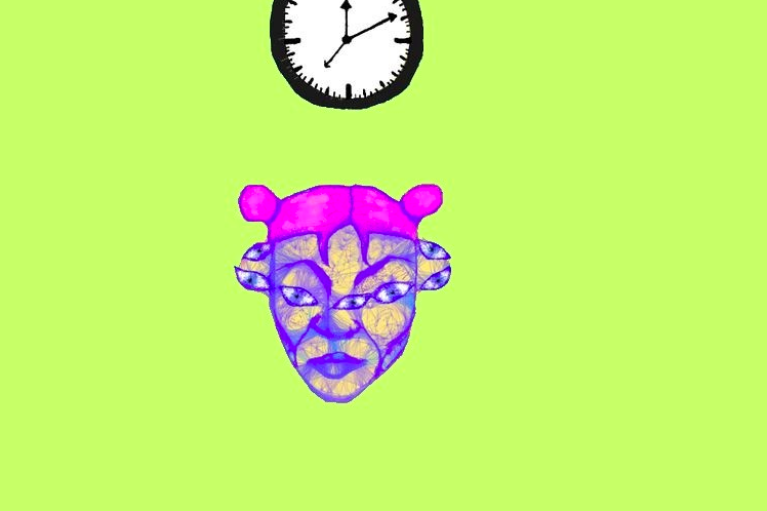
#SELFCARESUNDAYS: How teaching children about their emotions taught me to manage mine
Anonymous
07 Oct 2018
Imaged by Maia Magoga
I consider myself lucky to work with four and five-year-olds in a primary school. Although I am exhausted during term time and deal with bodily fluids a little more than I ideally would, I have so many moments of joy in even the dingiest of workdays I know I wouldn’t find in any other profession.
Because I work with this age group, a large part of the teaching I do revolves around personal, social and emotional development – a strange area of expertise for someone who themselves struggles with being overwhelmed by emotion. However, teaching the absolute basics of recognising and managing children’s’ emotions has taught me key lessons in attempting the same things for myself. Furthermore, it’s made me think about anxiety and despair as pretty primitive emotions that most people feel at some level throughout their lives. As such, when these feelings do occur, I try to treat myself with the same kindness and patience I treat my students with.
“Teaching the absolute basics of recognising and managing children’s’ emotions has taught me key lessons in attempting the same things for myself”
Name that emotion!
One of my favourite children’s books is The Colour Monster, by Anna Llenas. A squiggly, scribbly monster asks the reader for help in separating his colours (feelings) into different bottles so that he might not be so squiggly anymore.
I didn’t realise the value of naming different emotions until I started doing it. Just like in ‘The Colour Monster, anxiety can feel like a scribble inside my belly too mysterious and untangle-able for myself or anyone else. For a regrettably long period of my life, I resisted even attempting to vocalise the feelings that were knotted inside me. I was terrified by the prospect of confronting and attempting the tangle, and believed by admitting my feelings and worries I was making them more real.
Now, I think about the tangle like a messy room; the best thing you can do is start by picking up one thing, then putting it away, then another, and another, until everything is tidy. For me, speaking to a friend to regurgitate everything on my mind or writing my feelings and worries down onto a chart helps. Acknowledging the worries, thoughts and feelings does not solve the problems or rid me of the feelings, but it does provide me with a sense of ownership and understanding of emotions that are otherwise overwhelming.
The value of a cool-off period
When I have a panic attack, or am in the depths of a depressive episode, rationalising the situation to me is useless at that very point in time. With young children who are overwhelmed by emotion, I wait for them to calm down and get their breathing back to normal, or get them some water to cool off before addressing the situation.
“Taking time to repair and recover is so important to shorten the longevity of negative emotions”
The rationale behind this is that when a child is highly emotional, their bodies are flooded with stress hormones. As such, you want them to calm down before talking.
Every time I have been highly emotional and tried to solve problems straight away or delve back into work to distract myself, I have only ever made myself feel worse. Taking time to repair and recover is so important to shorten the longevity of negative emotions, and is such an important part of self-care. I try as much as I can to invest time in getting better before making decisions or trying to move forward.
You are not your actions, or your feelings
We award children the reassurance that their actions do not define them. I don’t talk about “naughty” or “bad” or “angry” children, but the choices that they make, and whether these choices were good, or bad, or kind, or not kind, and why they made these choices. They could have a bad day on Monday but come in on Tuesday and make kind choices, for example.
As an adult with mental health problems, this is ironically something I do not afford myself at all times. I’m realising my feelings, or indeed my mental health conditions, do not define me, neither do my actions – a lazy day does not mean I am a lazy person, a sad day does not mean I am a sad person, and to think so only adds guilt and shame to negative feelings.
Although teaching is a stressful job with a workload that takes its toll on the mental health of teachers, I feel lucky to have carved a meaningful space for myself working in schools. The age group I am working with is highly demanding, but the Early Years Curriculum allows for the social and emotional development of students, which is something that children of all ages deserve.
While some people might find these ideas obvious, for me they were simple lessons that I don’t remember learning – I had to become a teacher to consider them properly! Working with young children has given me purpose, but has also taught me the importance of being as kind to ourselves and our emotions as we would be to others, or indeed to a small child.








